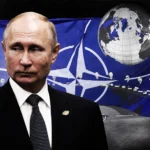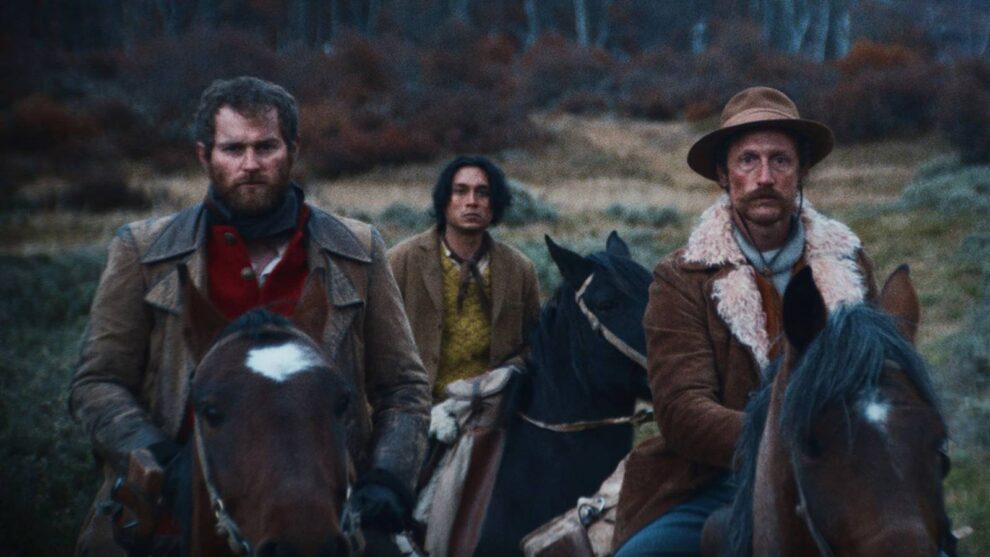The barbaric, bloody sins of the past come to define what entities govern certain land today, carried out by conquistadors and colonizers who hide behind righteous religious falsities to denigrate an indigenous population. With his directorial debut, a hauntingly conceived Chilean western The Settlers (Los Colonos), Felipe Gálvez localizes an origin story of this horror vis-a-vis the brutal genocide of the now-extinct Selk’nam people, who were native to the Patagonian region of southern Argentina and Chile. While spare early passages are narratively opaque and formally ornate to a distancing fault, the riveting second half––including a chilling reckoning with others occupying the desolate land and a well-executed structural gamble––brings profound expansion to this chilling story of atrocity.
Split into boldly conveyed chapters (The King of the White Gold, Half Blood, The End of the Earth, and The Red Pig), The Settlers begins in 1901 in Chile’s Tierra de Fuego province. As commanded by the bloodthirsty José Menéndez (Alfredo Castro), a trio of explorers are sent to delineate his property and establish a trade route to the Atlantic. In not-so-pronounced terms, they are also tasked with wiping out anyone that may get in their way or, as we come to find out, don’t even pose a threat. Taking part in this mission is MacLennan (Mark Stanley), a stoic Scottish lieutenant of the British Army; the brashly unpredictable American cowboy / mercenary Bill (Benjamin Westfall); and the younger, near-silent Segundo (Camilo Arancibia), a mixed-race mestizo who knows the area well and, at least according to the colonizers, “can smell Indian a mile away.”
Gálvez, who co-wrote the film with Antonia Girardi, immediately establishes the unforgiving violence amongst desolate fringes of this remote society as we open on a worker who loses his arm in a freak accident and is immediately shot to death. Backed by Harry Allouche’s Morricone-inspired score, The Tale of King Crab cinematographer Simone D’Arcangelo’s appreciation for vast Leone-esque vistas is apparent, albeit with a more inhospitable, bleak variety as the sun always seems to have just a few dying gasps of light left. It recalls Lisandro Alonso’s Jauja in more than just subject matter: D’Arcangelo shoots these stunning landscapes in the Academy ratio, finding a persistent beauty amongst the solitude. Characterization is intentionally sparse, the explorers’ surroundings speaking more volumes than they ever could––it’s as if the land could swallow them whole. Anachronistic touches pepper the material, some working better than others (notably distracting is touch-too-modern Westfall’s elocution). In this foreboding world, each shot carries some level of solemn import that creates a numb detachment during early proceedings of the film.
After a horrifying massacre amidst a mysteriously mist-filled landscape in which MacLennan and Bill brutally murder a group of the indigenous Selk’nam people, more interesting contradictions bubble up. Arancibia carries The Settlers as the half-Spanish, half-indigenous Segundo forced to reckon with the psychological toll of his hand in murdering his own people. When other aimless yet bloodthirsty conquistadors strewn across this land, and the indigenous people they employ to carry out their work, enter the picture, The Settlers‘ scope expands in rewarding ways to show the unforgiving savagery of this wild Chilean west.
As referenced in footage laid out over the end credits, Gálvez has such a grasp on visual storytelling that The Settlers could work just as well playing silent; a shot of bloodied hands being washed after battle––a plea for underserved sanctifying redemption––strikes a nerve more than any dialogue in the script. With a well-executed time jump in his last chapter, the director explores excuses of the upper class (e.g. religion as a concealing mask) in the name of colonialism. In a brilliant coda, Gálvez returns to the perspective of those that built this land. It’s an ending on a minor but willful act of defiance, indicating the tides of change are often not defined by colossal, radical events, but in resisting within everyday bounds to ensure survival.
Source: The Film Stage
















